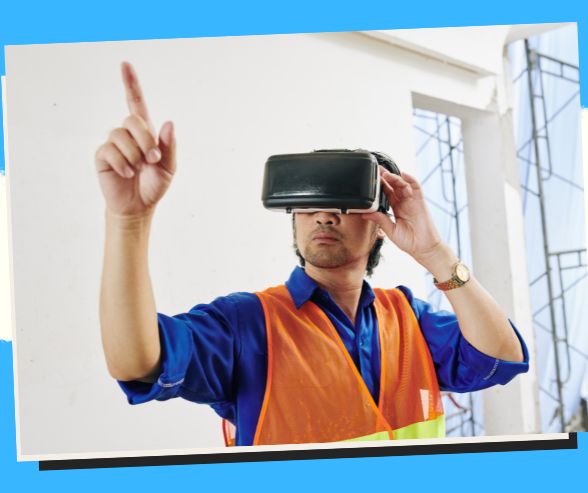
Designing Tomorrow: How Mixed Reality (MR) Reshapes Architecture and Design
Elevate your design perspective with mixed reality. Learn how architects and designers are using this technology to bring their visions to life in immersive and engaging ways.
Exploring the Boundless Creativity of Mixed Reality (MR) in Architecture and Design 🏗️🎨🔮
In the dynamic world of architecture and design, Mixed Reality (MR) has emerged as a groundbreaking technological innovation, reshaping the way professionals conceptualize, visualize, and communicate their ideas. This fusion of virtual and physical realms offers architects, designers, and clients an unparalleled opportunity to immerse themselves in spaces that are yet to be built. In this comprehensive article, we delve into the multifaceted applications of Mixed Reality in architecture and design, uncovering its potential, benefits, challenges, and future trends.
Unveiling Mixed Reality (MR) in Architecture and Design
Mixed Reality (MR) represents a convergence of Virtual Reality (VR) and Augmented Reality (AR), creating an environment where virtual and physical elements coexist seamlessly. Architects and designers can interact with digital models and simulations in the real world, making it possible to explore concepts with an unprecedented level of immersion and interaction.
Applications of Mixed Reality (MR) in Architecture and Design
**1. *Immersive Design Visualization*
Architects and designers can use MR to step inside their creations before they’re constructed. Immersive design visualization allows professionals to walk through digital representations of their projects, providing a visceral sense of scale, spatial relationships, and ambiance. This aids in identifying design flaws and making informed decisions before construction begins.
2. Real-Time Collaborative Design
MR facilitates real-time collaborative design by enabling geographically dispersed teams to collaborate on the same virtual space. Design elements can be added, modified, and discussed in real-time, fostering a more dynamic and efficient design process. This is particularly valuable when working on projects with international teams or remote stakeholders.
3. Interactive Client Presentations
Presenting design concepts to clients has never been more engaging. With MR, architects and designers can conduct interactive client presentations that go beyond traditional 2D renderings. Clients can virtually explore their future spaces, understand design choices, and provide feedback in a more intuitive and immersive manner.
4. Historic Preservation and Restoration
In the realm of historic preservation and restoration, MR offers a novel approach. Architects can overlay historical images, plans, and data onto existing structures, creating a time-traveling experience. This aids in accurately restoring buildings to their original state and allows stakeholders to appreciate their historical significance.
5. Designing for Accessibility
MR can play a pivotal role in designing for accessibility. Architects can simulate how people with varying abilities will navigate and interact with spaces. This ensures that designs are inclusive and functional for all users, aligning with the principles of universal design.
6. Streamlining Construction Processes
MR enhances construction processes by providing on-site workers with accurate 3D models and instructions. This improves communication and reduces errors, leading to more efficient construction timelines and minimizing costly rework.
7. Experimental Architecture
MR empowers architects to explore experimental architecture by creating dynamic, interactive prototypes. Unconventional designs can be tested virtually, allowing architects to experiment with form, materials, and spatial arrangements before committing to physical construction.
Benefits and Challenges of Mixed Reality (MR) Implementation
Benefits
- Enhanced Visualization: MR provides a realistic and immersive view of designs, aiding in better visualization.
- Efficient Collaboration: Real-time collaboration and communication improve project efficiency.
- Interactive Client Engagement: Clients engage more deeply with designs, leading to informed decisions.
- Reduced Design Flaws: Early detection of design flaws leads to cost and time savings during construction.
- Innovative Design: MR encourages innovative, experimental design approaches.
Challenges
- Technical Complexity: Implementing MR systems requires technical expertise and infrastructure.
- Cost: Developing MR applications and acquiring necessary hardware can be costly.
- User Adoption: Architects and clients need training to use MR tools effectively.
- Data Privacy: Protecting sensitive design data within MR systems is crucial.
- Integration Challenges: Ensuring MR tools integrate with existing design software is essential.
Future Trends and Considerations
As Mixed Reality continues to evolve, several trends are shaping its future in architecture and design:
- Wearable MR Devices: The development of lightweight, powerful MR glasses will enable more seamless interaction.
- Holographic Interfaces: Holographic interfaces may replace traditional CAD software, enhancing design interactivity.
- AI Integration: AI-powered MR tools could assist in design optimization and decision-making.
- Sustainable Design Simulation: MR can simulate the environmental impact of design choices, aiding in sustainability efforts.
- Remote Site Inspections: MR could enable remote site inspections with real-time collaboration.
Conclusion
Mixed Reality (MR) is reshaping the landscape of architecture and design, propelling creativity, collaboration, and innovation to unprecedented heights. From immersive visualization to real-time collaboration, MR empowers architects and designers to transcend traditional boundaries. While challenges like technical complexity and cost exist, the potential benefits far outweigh the drawbacks. As technology continues to advance, the integration of MR will become an integral part of the architectural and design process. Embracing Mixed Reality today positions professionals for a future where creativity knows no bounds and design possibilities are limitless. 🏗️🌟🎨
Related Queries
🏛️ Shaping Spaces: The Mixed Reality Design Revolution
🎨 Beyond Blueprints: Designing in Mixed Reality
🌆 Immersive Horizons: MR’s Impact on Architecture
🏗️ Building in Pixels: Architecture Meets Mixed Reality
🖌️ Design Unleashed: Exploring Mixed Reality’s Canvas
🏞️ Designing Realities: Mixed Reality in Architecture
🌐 Design X Reality: Architecture’s Mixed Future
🗺️ Blueprint 2.0: Mixed Reality Design Paradigm
🏙️ Design Alchemy: Transforming Spaces with MR
🖼️ From VR to IRL: Mixed Reality in Design Realm
Save/Share this story with QR CODE
Disclaimer
This article is for informational purposes only and does not constitute endorsement of any specific technologies or methodologies and financial advice or endorsement of any specific products or services.
📩 Need to get in touch?
Feel free to Email Us for comments, suggestions, reviews, or anything else.
We appreciate your reading. 😊Simple Ways To Say Thanks & Support Us:
1.) ❤️GIVE A TIP. Send a small donation thru Paypal😊❤️
Your DONATION will be used to fund and maintain NEXTGENDAY.com
Subscribers in the Philippines can make donations to mobile number 0917 906 3081, thru GCash.
3.) 🛒 BUY or SIGN UP to our AFFILIATE PARTNERS.
4.) 👍 Give this news article a THUMBS UP, and Leave a Comment (at Least Five Words).
AFFILIATE PARTNERS

World Class Nutritional Supplements - Buy Highest Quality Products, Purest Most Healthy Ingredients, Direct to your Door! Up to 90% OFF.
Join LiveGood Today - A company created to satisfy the world's most demanding leaders and entrepreneurs, with the best compensation plan today.



 Business Technology, Finance Technology & Information Technology
Business Technology, Finance Technology & Information Technology





